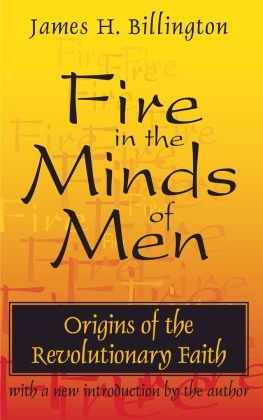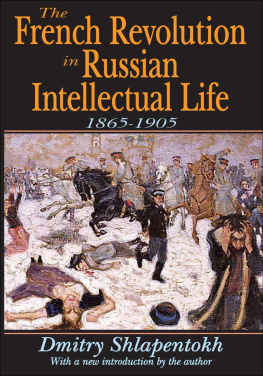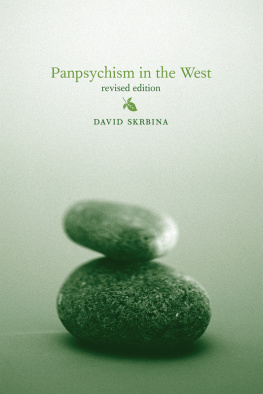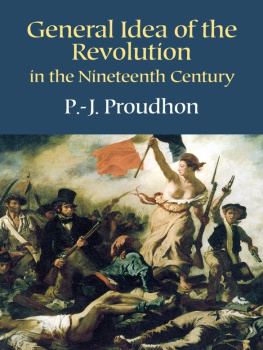Fire in the Minds of Men
James H. Billington
Fire in the Minds of Men
Origins of the Revolutionary Faith
with a new introduction by the author
Originally published in 1980 by Basic Books, Inc., Publishers.
Published 1999 by Transaction Publishers
Published 2017 by Routledge
2 Park Square, Milton Park, Abingdon, Oxon OX14 4RN
711 Third Avenue, New York, NY 10017, USA
Routledge is an imprint of the Taylor & Francis Group, an informa business
Copyright 1999 by Taylor & Francis.
All rights reserved. No part of this book may be reprinted or reproduced or utilised in any form or by any electronic, mechanical, or other means, now known or hereafter invented, including photocopying and recording, or in any information storage or retrieval system, without permission in writing from the publishers.
Notice:
Product or corporate names may be trademarks or registered trademarks, and are used only for identification and explanation without intent to infringe.
Library of Congress Catalog Number: 98-24144
Library of Congress Cataloging-in-Publication Data
Billington, James H.
Fire in the minds of men: origins of the revolutionary faith / James H.
Billington, with a new introduction by the author.
p. cm.
Originally published: New York: Basic Books, 1980.
Includes bibliographical references (p.) and index.
1. RevolutionsHistory19th century. 2. Revolutionaries
History19th century. I. Title.
HM283.854 1998
303.6'4'09034dc21
98-24144
CIP
ISBN-13: 978-0-7658-0471-6 (pbk)
Contents
- BOOK I FOUNDATIONS OF THE REVOLUTIONARY FAITH
: THE LATE EIGHTEENTH AND EARLY NINETEENTH CENTURIES - BOOK II THE DOMINANCE OF THE NATIONAL REVOLUTIONARIES:
THE MID-NINETEENTH CENTURY - BOOK III THE RISE OF THE SOCIAL REVOLUTIONARIES:
THE LATE NINETEENTH AND EARLY TWENTIETH CENTURIE
- BOOK I FOUNDATIONS OF THE REVOLUTIONARY FAITH
: THE LATE EIGHTEENTH AND EARLY NINETEENTH CENTURIES - BOOK II THE DOMINANCE OF THE NATIONAL REVOLUTIONARIES:
THE MID-NINETEENTH CENTURY - BOOK III THE RISE OF THE SOCIAL REVOLUTIONARIES:
THE LATE NINETEENTH AND EARLY TWENTIETH CENTURIE
Guide
REISSUING in the late 1990s a book written in the late 1970s, it may be useful to summarize and take a fresh look in light of intervening developments at its main theses and underlying assumptions.
The book suggests that the violent revolutions that convulsed the twentieth century grew out of a faith generated in the nineteenth. Politicized intellectuals created all-encompassing, secular ideologies as surrogates for religious belief within the European world during the century-and-a-quarter between the French and the Russian revolutions. Those who generated this faith and called themselves revolutionaries during this period were generally involved in journalism and rarely exercised real power. They believed that the violent overthrow of traditional political and religious authority would produce an altogether new order that would not just assure prosperity and justice but would also transform the human condition.
There was a basic schism within the revolutionary faith between those who believed most in fraternity (that the nation was the vehicle of deliverance) and those who believed in equality (that a social class was the vehicle of deliverance). Both of these forms of faith differed fundamentally from the more limited, practical, and anti-authoritarian belief in liberty that animated the American War of Independence. Although the American Revolution acquired symbolic significance for both national and social revolutionaries, its essentially liberal ideal exercised relatively little substantive influence on the modem revolutionary tradition as it radiated out from Europe to the world.
The revolutionary faith carne out of the wilderness and into power in its most violent and messianic form in the wake of World War I. This bloody conflict delegitimized traditional authority and helped the national revolutionary tradition come to power in Mussolini's Italy and Hitler's Germany; the social revolutionary faith, in Lenin's and Stalin's Russia.
These revolutions created dictatorships and modem totalitarianism. The most violent and authoritarian movements in Germany and Russia each intensified one form of the revolutionary faith by adopting significant elements of the other. Nazism was, literally, an abbreviation for national socialism. Communism was defined as "socialism in one country." One fortified fraternity with equality; the other, equality with fraternity. Each exemplified the distinctive characteristic of the revolutionary faith that "the extremes touch each other." Each subordinated liberty to a new and far more totalistic form of authority than had existed previously. The revolutionary faith was sustained in power at great cost to human life and freedom.
I anticipated in my original introduction that there would be hostility to: (1) the suggestion that belief in revolution was a new kind of religion; (2) the emphasis on ideas and leaders rather than on social, psychological, and other material forces; and (3) the inclusion of exotic figures and symbols that distract focus from the customary hagiographic core of this subject. The desire to preserve a romantic and positive picture of the revolutionary tradition has remained strong in the academy even as that view has generally been repudiated by voters in the last generation.
I believe that history in these last two decades provides some measure of vindication for my suggestion then that the end might be approaching for this political religionwhich might in the long run "prove to be only a stage in the continuing metamorphosis of older forms of faith." The two most important "revolutionary" upheavals of the last twenty years have been the Muslim extremist uprising that came to power in Iran and the Catholic-based solidarity movement that started the chain of events that overthrew Leninist rule in Eastern Europe. Both were precipitated by movements from below rooted in religion rather than by new movements from above rooted in secular ideology.
I ended my original work by calling attention to the innovative nature of a still often overlooked earlier event in Poland: the overthrow of Wladislaw Gomulka in 1970. It was the first forcible change of political power brought about by a workerled uprising in Eastern European since the Russian revolution of 1917. The Solidarity movement that subsequently arose among the same workers posed the kind of challenge to which Leninist control structures proved altogether unable to respond. In 1987, when the prospect for significantly changing any Communist regime still looked bleak, I wrote about Solidarity that it represented "the awesome intrusion into ordinary life of the voice that proclaims both a higher moral standard and a new set of historical possibility." I suggested that "it is not hard to imagine ... that in the 21st century ... even in the Soviet Union, historians will look back on Solidarity as an anticipation, if not a prototype, of movements ... developed to transform their own society in ways radically different from the violent secular revolutionary movements of the past." Not simply in Catholic Poland, but in Protestant East Germany and ultimately Orthodox Russia, the pattern that emerged was non-violent, social rather than political, and tinged with religion. These changes were produced more by "spontaneity" than by the elite "consciousness" that Lenin had prescribed for his revolutionary party, by a desire for evolution rather than revolution, liberty rather than fraternity or equality.
Next page









